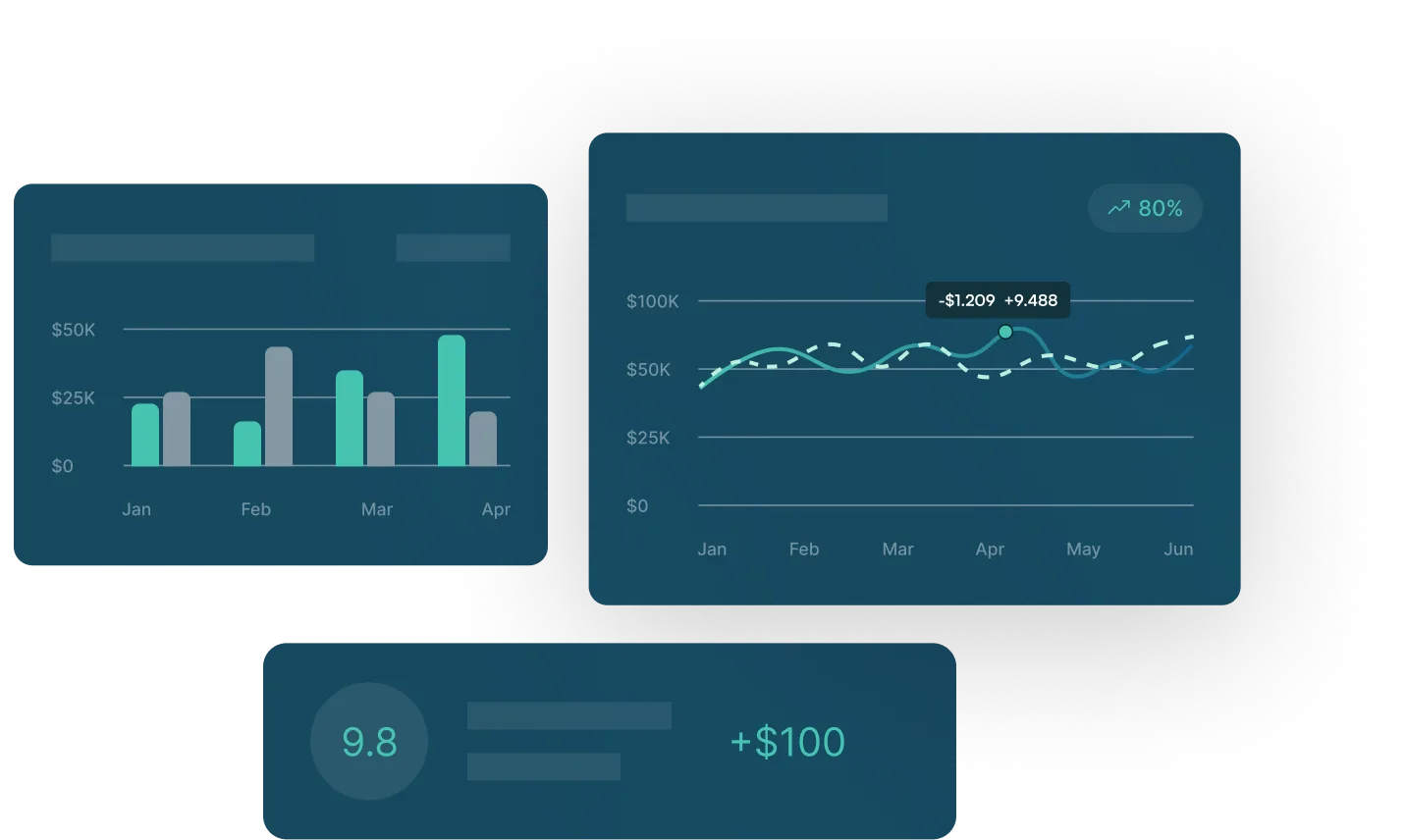Who Needs Payment Reconciliation Software?


Navigating the complexities of high-level finance can be daunting when dealing with multiple banks, parties, platforms, currencies, companies, and more. Payment reconciliation solutions are designed to simplify payment and record-keeping processes and eliminate inconsistencies from invoices, loans, and deposits that require meticulous balancing and reconciliation.
How Do I Know if I Need Payment Reconciliation Software?
Several challenges can lead to the need for payment reconciliation software in a business. Addressing these challenges is crucial for maintaining accurate financial records and ensuring the integrity of the company’s financial statements, as well as the health and sustainability of the business. Here are a few challenges that may warrant intervention with technology solutions:
- Complex Transactions: High volumes of transactions and complex payment systems can increase the likelihood of errors, discrepancies, and omissions in your records.
- Multiple Payment Channels: Businesses may use many different payment methods and channels from various sources and platforms, which can sometimes result in reconciliation errors.
- Incomplete or Inaccurate Documentation: Incomplete or inaccurate documentation, such as missing invoices or payment receipts, can hinder reconciliation and lead to costly errors.
- Bank Statement Variances: Variances between the company’s records and bank statements can occur due to processing delays, bank fees, or recording errors.
- Fraud and Unauthorized Transactions: Fraudulent activities, including unauthorized transactions or altered payment details, can result in financial loss and further reconciliation challenges.
- Global Operations: Businesses operating globally may face challenges related to the complexities of multiple currencies, exchange rates, and cross-border transactions.
- Timing Differences: Timing differences between when a payment is initiated and when it’s reflected in financial statements can lead to errors when done manually.
- General Manual Error: Manual data entry errors, such as typos, formula errors, or transposition mistakes, can lead to costly discrepancies in payment records

How Can a Treasury and Risk Management System (TRMS) help with payment reconciliation?
Technology and software play a crucial role in addressing challenges related to payment reconciliation. Specifically, a Treasury and Risk Management System can be a powerful tool in helping to mitigate errors related to manual processes and key person risk. Here are some features of a TRMS that may be beneficial with respect to payment reconciliation:
- Centralized Platform: A treasury and risk management system provides a centralized platform for managing treasury and risk-related activities, including payment reconciliation as part of a connected financial ecosystem.
- Benefits: Streamlines processes, improves visibility, and ensures consistency in handling payment data.
- Integration with Banking Systems: Treasury and risk management systems can integrate with banking systems and financial institutions, automating the import of bank statements and transaction data on a timelier basis.
- Benefits: Reduced manual data entry, faster reconciliation, and improved accuracy by leveraging direct connections with banks.
- Automation of Reconciliation Processes: A TRMS automates the reconciliation process by matching internal financial records with external bank statements and other transaction data.
- Benefits: Increased efficiency, reduced errors, and the ability to handle large volumes of transactions.
- Cash Forecasting and Liquidity Management: A TRMS often includes features for cash forecasting and liquidity management, helping businesses anticipate future cash flows and funding needs.
- Benefits: Improved cash visibility, better decision-making, and the ability to proactively address reconciliation challenges before they may occur.
- Risk Management: Treasury management systems that include tools for risk management and compliance monitoring help businesses identify errors and mitigate potential risks associated with payments.
- Benefits: Enhanced risk awareness and visibility, compliance with regulatory requirements, and improved overall financial security.
- Real-time Monitoring and Reporting: A TRMS provides real-time monitoring of payment transactions and generates detailed reports on cash positions, payments, and reconciliation status.
- Benefits: Immediate or near-immediate identification of discrepancies, improved decision-making, and enhanced reporting for more strategic financial analysis.
- Audit Trails and Documentation: A TRMS maintains comprehensive audit trails and documentation, providing a transparent and traceable record of all treasury and payment activities.
- Benefits: Facilitates audit processes, ensures accountability, and creates an accurate, consolidated paper trail for addressing reconciliation errors.
- Multi-Currency Support: Treasury and risk management systems can support multiple currencies and exchange rates, addressing challenges associated with cross-border payment reconciliation.
- Benefits: Improved accuracy in recording and reconciling transactions involving different currencies and jurisdictions.
- Secure Access Controls: Many treasury management systems include robust access controls, ensuring that only authorized personnel have access to sensitive payment and financial information.
- Benefits: Enhanced security, reduced risk of unauthorized access, and protection against fraudulent activities, leading to fewer reconciliation errors.
- Scalability and Flexibility: A TRMS is designed to scale with the growing needs of a business and is often flexible enough to adapt to changing payment and reconciliation requirements.
- Benefits: Supports business growth, accommodates evolving processes, and ensures long-term viability of processes.
Implementing a Treasury and Risk Management System can be transformative to a company’s ability to reconcile payments. Acting as a centralized hub, it streamlines operations, automates reconciliation processes, and dramatically enhances efficiency and accuracy. Minimizing payment reconciliation issues, small treasury teams can focus on more complex tasks and strategic financial decision-making with confidence in their automated data.
Who Needs Payment Reconciliation Software?
Navigating the complexities of high-level finance can be daunting when dealing with multiple banks, parties, platforms, currencies, companies, and more. Payment reconciliation solutions are designed to simplify payment and record-keeping processes and eliminate inconsistencies from invoices, loans, and deposits that require meticulous balancing and reconciliation.
How Do I Know if I Need Payment Reconciliation Software?
Several challenges can lead to the need for payment reconciliation software in a business. Addressing these challenges is crucial for maintaining accurate financial records and ensuring the integrity of the company’s financial statements, as well as the health and sustainability of the business. Here are a few challenges that may warrant intervention with technology solutions:
- Complex Transactions: High volumes of transactions and complex payment systems can increase the likelihood of errors, discrepancies, and omissions in your records.
- Multiple Payment Channels: Businesses may use many different payment methods and channels from various sources and platforms, which can sometimes result in reconciliation errors.
- Incomplete or Inaccurate Documentation: Incomplete or inaccurate documentation, such as missing invoices or payment receipts, can hinder reconciliation and lead to costly errors.
- Bank Statement Variances: Variances between the company’s records and bank statements can occur due to processing delays, bank fees, or recording errors.
- Fraud and Unauthorized Transactions: Fraudulent activities, including unauthorized transactions or altered payment details, can result in financial loss and further reconciliation challenges.
- Global Operations: Businesses operating globally may face challenges related to the complexities of multiple currencies, exchange rates, and cross-border transactions.
- Timing Differences: Timing differences between when a payment is initiated and when it’s reflected in financial statements can lead to errors when done manually.
- General Manual Error: Manual data entry errors, such as typos, formula errors, or transposition mistakes, can lead to costly discrepancies in payment records

How Can a Treasury and Risk Management System (TRMS) help with payment reconciliation?
Technology and software play a crucial role in addressing challenges related to payment reconciliation. Specifically, a Treasury and Risk Management System can be a powerful tool in helping to mitigate errors related to manual processes and key person risk. Here are some features of a TRMS that may be beneficial with respect to payment reconciliation:
- Centralized Platform: A treasury and risk management system provides a centralized platform for managing treasury and risk-related activities, including payment reconciliation as part of a connected financial ecosystem.
- Benefits: Streamlines processes, improves visibility, and ensures consistency in handling payment data.
- Integration with Banking Systems: Treasury and risk management systems can integrate with banking systems and financial institutions, automating the import of bank statements and transaction data on a timelier basis.
- Benefits: Reduced manual data entry, faster reconciliation, and improved accuracy by leveraging direct connections with banks.
- Automation of Reconciliation Processes: A TRMS automates the reconciliation process by matching internal financial records with external bank statements and other transaction data.
- Benefits: Increased efficiency, reduced errors, and the ability to handle large volumes of transactions.
- Cash Forecasting and Liquidity Management: A TRMS often includes features for cash forecasting and liquidity management, helping businesses anticipate future cash flows and funding needs.
- Benefits: Improved cash visibility, better decision-making, and the ability to proactively address reconciliation challenges before they may occur.
- Risk Management: Treasury management systems that include tools for risk management and compliance monitoring help businesses identify errors and mitigate potential risks associated with payments.
- Benefits: Enhanced risk awareness and visibility, compliance with regulatory requirements, and improved overall financial security.
- Real-time Monitoring and Reporting: A TRMS provides real-time monitoring of payment transactions and generates detailed reports on cash positions, payments, and reconciliation status.
- Benefits: Immediate or near-immediate identification of discrepancies, improved decision-making, and enhanced reporting for more strategic financial analysis.
- Audit Trails and Documentation: A TRMS maintains comprehensive audit trails and documentation, providing a transparent and traceable record of all treasury and payment activities.
- Benefits: Facilitates audit processes, ensures accountability, and creates an accurate, consolidated paper trail for addressing reconciliation errors.
- Multi-Currency Support: Treasury and risk management systems can support multiple currencies and exchange rates, addressing challenges associated with cross-border payment reconciliation.
- Benefits: Improved accuracy in recording and reconciling transactions involving different currencies and jurisdictions.
- Secure Access Controls: Many treasury management systems include robust access controls, ensuring that only authorized personnel have access to sensitive payment and financial information.
- Benefits: Enhanced security, reduced risk of unauthorized access, and protection against fraudulent activities, leading to fewer reconciliation errors.
- Scalability and Flexibility: A TRMS is designed to scale with the growing needs of a business and is often flexible enough to adapt to changing payment and reconciliation requirements.
- Benefits: Supports business growth, accommodates evolving processes, and ensures long-term viability of processes.
Implementing a Treasury and Risk Management System can be transformative to a company’s ability to reconcile payments. Acting as a centralized hub, it streamlines operations, automates reconciliation processes, and dramatically enhances efficiency and accuracy. Minimizing payment reconciliation issues, small treasury teams can focus on more complex tasks and strategic financial decision-making with confidence in their automated data.

See GTreasury in Action
Get connected with supportive experts, comprehensive solutions, and untapped possibility today.



































.png)

.png)











